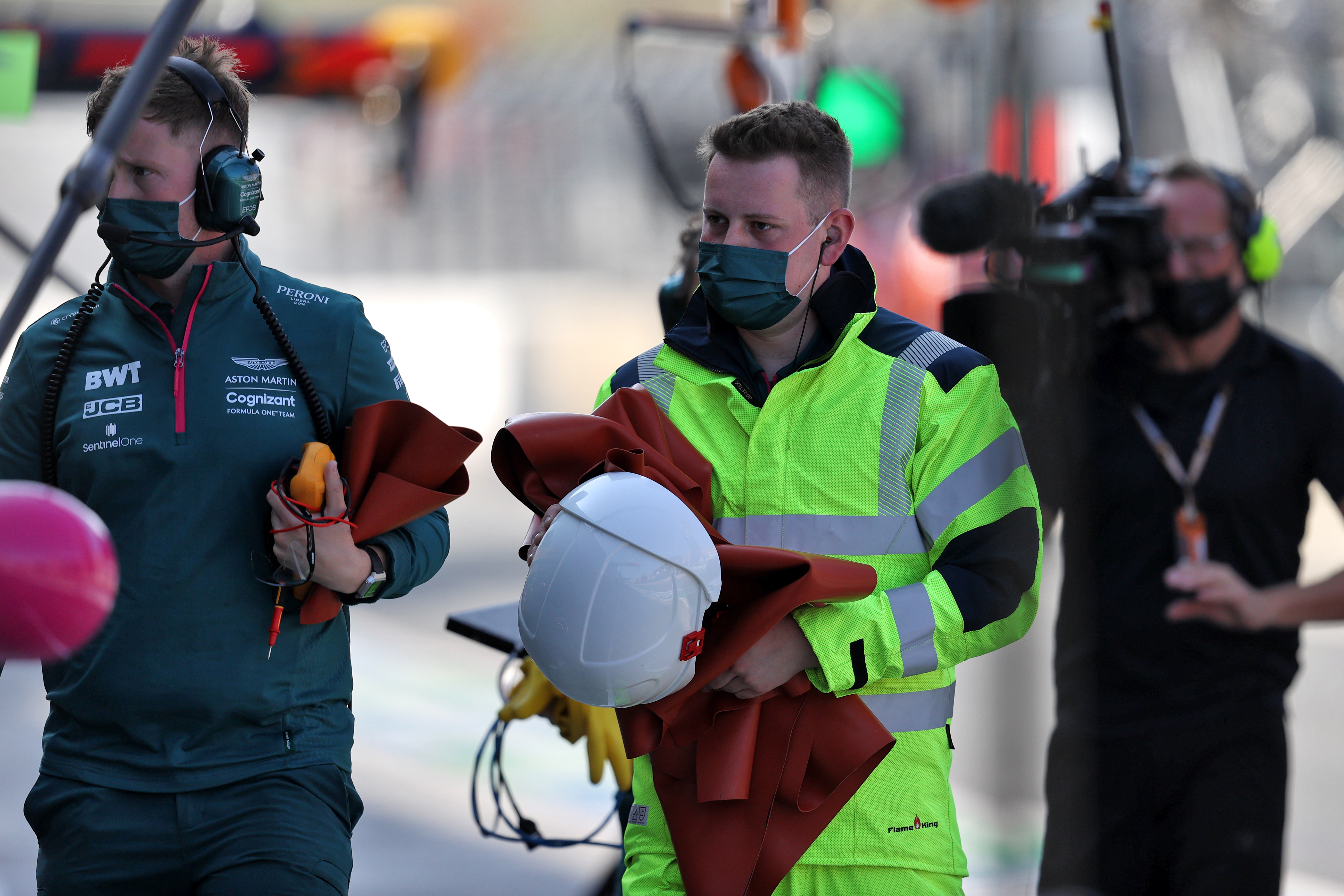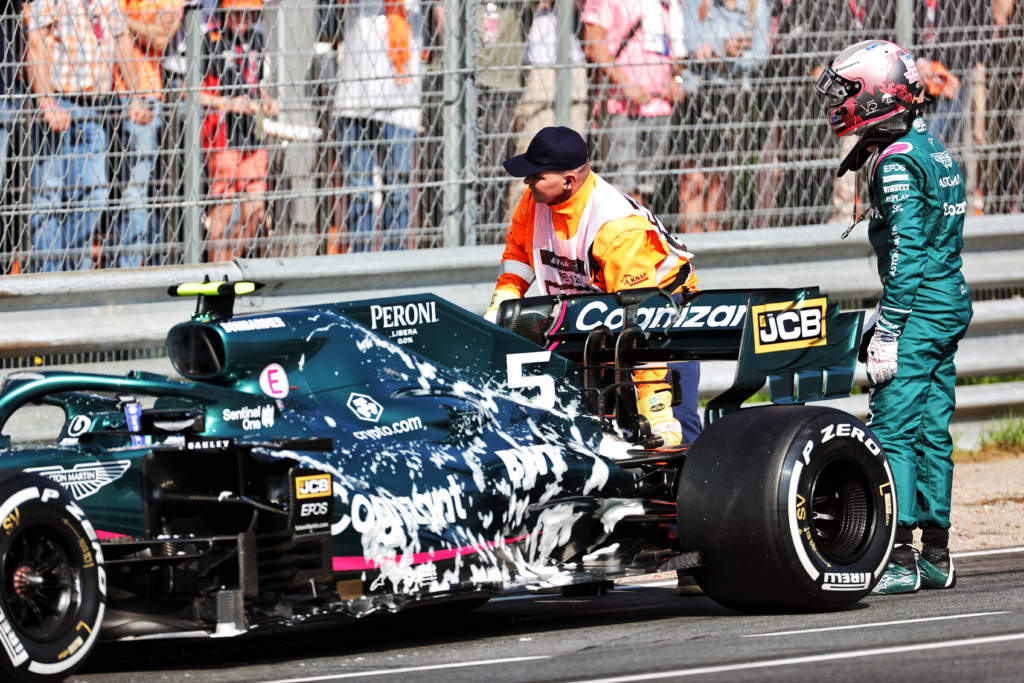Up Next

Sebastian Vettel’s engine failure caused a 37-minute stoppage of free practice for the Dutch Grand Prix, with the lengthy recovery a result of race control not being certain the four-time Formula 1 champion’s Aston Martin was not ‘live’ and therefore safe to touch.
Vettel had suffered MGU-K problems earlier in the session that led to him returning to the pits. But on his subsequent run, he pulled over at the pit entry after what he described as an engine failure.
He was told the car was safe in terms of not being ‘live’ before he got out but had also been told that fire extinguisher marshals were needed.
Initially, the marshals were not able to approach the car because race control had not given them permission to do so. Vettel retrieved a fire extinguisher and received some instruction from afar on how to use it.
The marshals were then allowed to approach the car, but not touch it because the mandatory ERS status lights were showing yellow.
F1 cars have been obliged to carry ERS status lights ever since the introduction of the V6 turbo hybrid engines in 2014.

But the delay was a result of the ERS status light switching from showing an ERS safe state to unsafe, meaning all the associated precautions had to be taken to ensure marshal safety.
Aston Martin itself was confident the car was safe having told Vettel – who touched the car repeatedly once out of the car – it was clear.
While a green light means clear and red light means ‘live’, yellow means that the car may be ‘live’ and therefore potentially unsafe. Hence, the marshals were not allowed to touch the car and the recovery was delayed until race control was certain the car was safe.
The incident also required a significant clear-up of the track, even though Vettel had taken prompt action to get off the racing line when the engine started to lose oil.
There was also what the FIA describes as a “safety systems issue” that had to be reset, which added time to the red flag period.
This meant only 23 minutes of the session took place, given 37 minutes was dedicated to the clear-up of Vettel’s car and systems reset.
Aston Martin team principal Otmar Szafnauer confirmed that “we don’t have the root cause” of the failure but that the priority is changing the engine ahead of FP2.






